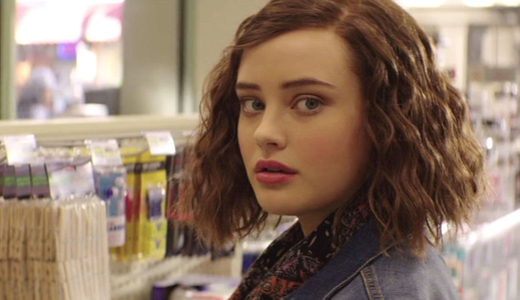When researching a book I wrote about media discernment, I found scores of studies linking numerous negative human behaviors to entertainment. For instance, researchers believe that kids who see characters smoke onscreen are more likely to light up in real life. Other studies link onscreen sexual activities and actual sexual behaviors.
But what about suicides? Is it possible that a show depicting a graphic suicide could lead to someone actually taking their own life?
Netflix released all 13 episodes of 13 Reasons Why on March 31, 2017—a show that centered around fictional Hannah Baker, a teen girl who, on a series of cassette tapes, blamed a plethora of people for what she was about to do—commit suicide (and did gruesomely in the final episode of Season One). Although the suicide itself wasn’t glamorized, the “revenge” associated with Hannah’s death was. Was it possible that this show could become a road map for vulnerable teenagers?
I think so, and you’ll understand after you hear my conversation with Patrice Bright, the mother of Anna Bright, a girl who took her own life—an act that her mother believes was highly influenced by the show. Patrice believes that Anna’s not alone: The suicides of at least five people, by my count, can be linked to 13 Reasons Why, but after talking with Patrice I believe the number may be much higher.
You can’t blame suicide on any one factor, of course, and even pointing to one potential factor can be difficult. When a child kills themselves, the “whys” often die with the child. And in the aftermath, grieving parents are reluctant to share even the details they are aware of. And, as with most things regarding human behavior, causation is complicated.
Let me explain it this way: When I was in ninth grade, I was kicked out of school. If you knew me today, you might find that hard to believe. But I was different back then and my teen brain wasn’t functioning on all cylinders. Why was I booted out of school? Well, as I said, causation is complicated. But, looking back on this incident, I can give you several factors that were in play: I had just moved to a new town and wanted to get noticed (terrible way, I know!). I belligerently stood up to a teacher that I thought was being unfair. I hoped it would lead to me making some friends. I hadn’t really considered the consequences of my actions.
I think 13 Reasons Why’s link to actual suicide is often complicated, too. When a young person who has seen the show takes his/her life, can we conclusively know the Netflix show was a factor? Probably not. But the opposite mistake is believing this Netflix program is never (and can’t be) a factor.
Anna Bright was just 14 when she crawled into a bathtub full of water, just like Hannah Baker did in 13 Reasons Why, and took her own life. She did so on April 18, 2017, just 18 days after the release of Season One. I contacted Anna’s mother, Patrice, and asked if she’d be willing to talk to me about what happened that fateful day, knowing how hard it must be to tell (and retell) the painful details. She agreed. Here’s what she had to say.
Patrice believes that 13 Reasons Why influenced Anna’s tragic act greatly—and she believes the show influenced others, too. In fact, she believes that many parents, grieving over the suicide of a child, might not realize how influential the show might’ve been in their own personal tragedies. When I asked her why she believes that the Netflix show might be complicit in far more cases than we’re aware of, she told me this:
I just received a letter from a lady in Ohio that told me that until she heard our story—her daughter also committed suicide after watching 13 Reasons Why actually on that Easter Sunday, April, the 16th—she had not put the two together about her watching the show, which [her daughter] also watched without their knowledge or their permission. So I’m not sure people are making the connection, and they may not even be aware that their children are watching the show.
I have a friend that is a teacher, and she said that kids were watching it during PE time when they had free time. And you didn’t even have to have your own device or the app on your phone. You could watch it on somebody else’s. And there were actually teachers who were encouraging students to watch the show. It is so vastly accessible.
That’s why we have had concern and the push to have it removed from Netflix. Our goal is to keep that from happening so that maybe other kids—because it’s obviously triggering something in not only children but adults as well—the idea of showing a graphic suicide. We don’t need to show a graphic anything to get the point across. The suicide that was in 13 Reasons Why is used as a revenge technique to kind of make people feel bad for the main character’s death—Hannah’s death. And that’s not at all what suicide does. It’s like a grenade: the person holding the grenade is the one who is destroyed completely, but the family members and the loved ones, the people who loved that person, are the ones that the pain is passed to once that person is gone. So the pain doesn’t go away; it’s just transferred.
Teen suicide is a terrible and growing issue in the United States, and for many families, it’s become a tragedy beyond comprehension. Whatever Netflix’s motives might’ve been for bringing 13 Reasons Why to the screen—and I’d like to believe they were good ones—many cultural observers (like me), mental health experts and, especially, grieving parents believe the show was a factor in the cutting short of promising, young lives.
If you or someone you know is struggling with suicide, there are resources to help—including Focus on the Family’s very own Alive to Thrive program. Click here to learn more and sign up for a free preview of the program’s eBook.






Recent Comments